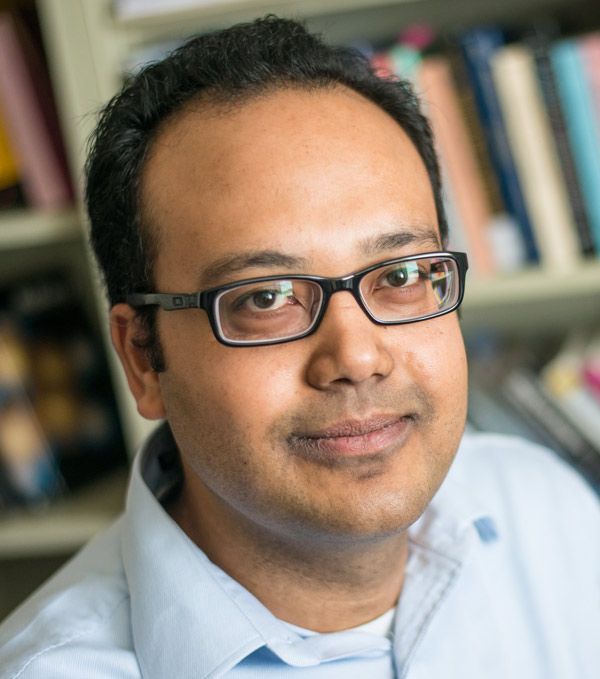Carbon nanotubes (CNTs), hexagonal lattices of carbon atoms rolled into tubular shapes, can be designed for a host of functions. Their strength and versatility make them useful in energy storage, nanoelectronics, drug delivery, spectroscopic imaging and other applications.
Different types of CNTs can be distinguished by their chirality, or the orientation of their atomic lattices. Chirality determines a nanotube’s properties: whether they are metallic, for example, or semi-conducting.
“Our ability to use carbon nanotubes boils down to their chirality, but it’s very difficult to synthesize a specific kind of nanotube,” says Jeetain Mittal, assistant professor of chemical and biomolecular engineering. The typical production method—chemically synthesizing CNTs in an aqueous solution—results in a grab-bag of nanotubes having different chiralities.
Mittal’s group is trying to develop a rational computational design method of sorting CNTs that could lead to high-purity, high-yield nanotube production.
Scientists know that short, single-strand DNA sequences are attracted to CNTs in solution, and that a particular DNA sequence adheres to a nanotube counterpart of specific chirality. This characteristic behavior has been used to isolate individual types of nanotubes, but no one understands the reason for the attraction.
“There is no recipe or formula that explains the relationship,” Mittal says. There is only copious empirical data from other researchers that lists specific DNA sequences and their nanotube counterparts. “If you said, ‘I would like this type of nanotube. Can you tell me which DNA sequence to use to isolate it?’—we can’t do that without a lot of trial and error.”
Before solving the sorting problem, Mittal’s group is tackling a related problem.
“We’re first asking which possible structures DNA molecules take when they attach to these nanotubes, and which structural motifs help us identify why they function this way,” he says. Because the structure of biological molecules defines their functions, the group hypothesizes that the function of DNA sequences around CNTs is also related to the structure of the DNA sequences.
The answer to this question could lead not only to a solution to the sorting problem but also to the ability to design DNA-CNT hybrids for cell imaging, chemical detection and other practical applications.
Mittal’s group has conducted controlled experiments to examine how different DNA configurations behave around different types of nanotubes. They have found a range of behaviors that provide useful information on how certain DNA sequences work. They have primarily employed computer models whose simulations provide information that is not accessible when using state-of-the-art experimental techniques.
Currently, Mittal and his students are developing simpler, coarse-grained computational models. These are more efficient because they remove the representation of water molecules from the aqueous solution, and they represent large groups of DNA atoms with single beads.
“To get to the point where we can predict which DNA sequence will distinguish a specific carbon nanotube, we need a simpler model,” says Mittal. “This will help us get to the relevant data much more quickly than a complicated model that takes a long time to run.”

